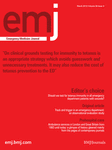
EMERGENCY MEDICINE JOURNAL
Scope & Guideline
Empowering Emergency Care Through Cutting-Edge Research
Introduction
Aims and Scopes
- Patient-Centered Care:
The journal emphasizes research that focuses on the experiences and outcomes of patients in emergency care, including studies on patient satisfaction, the impact of emergency department (ED) design on care delivery, and the needs of specific populations such as children and older adults. - Clinical Decision-Making:
A significant focus is placed on improving clinical decision-making through the development and validation of clinical decision rules, risk stratification tools, and the use of technology, such as artificial intelligence and point-of-care ultrasound. - Quality Improvement and Safety:
The journal publishes studies aimed at quality improvement initiatives within emergency departments, including strategies to enhance patient safety, reduce wait times, and improve triage processes. - Innovative Treatments and Interventions:
Research exploring new treatment modalities, medication efficacy, and procedural innovations in emergency medicine is a core area, including studies on analgesia, sedation protocols, and management of acute conditions. - Trauma and Critical Care:
The journal covers topics related to trauma care and critical interventions in emergency settings, including studies on prehospital care, trauma systems, and emergency surgery. - Public Health and Policy:
Emerging themes in public health and policy, particularly related to emergency response during crises (like the COVID-19 pandemic), and the impact of socioeconomic factors on emergency care utilization, are also highlighted.
Trending and Emerging
- Impact of COVID-19 on Emergency Care:
Research focusing on the implications of the COVID-19 pandemic on emergency medicine practices, patient outcomes, and system responses has significantly increased. This includes studies on the management of COVID-19 patients, telemedicine adoption, and changes in patient flow. - Mental Health and Emergency Care:
There is a growing emphasis on the mental health aspects of emergency care, including studies investigating the treatment of psychiatric emergencies, the impact of trauma on mental health, and strategies to improve mental health resources in emergency settings. - Technology Integration in Emergency Medicine:
The integration of technology, such as artificial intelligence in diagnostics, telemedicine, and point-of-care ultrasound, is a prominent trend. Research is increasingly focusing on the efficacy and implementation of these technologies in improving patient care. - Social Determinants of Health:
Emerging themes related to social determinants of health are gaining traction, with studies examining how socioeconomic factors influence emergency care utilization, patient outcomes, and disparities in access to care. - Frailty and Geriatric Emergency Medicine:
Research addressing the specific needs of older adults, particularly those living with frailty, is becoming more prominent, emphasizing tailored approaches in emergency settings to improve outcomes for this vulnerable population.
Declining or Waning
- Traditional Procedural Techniques:
There is a noticeable decline in publications focused on traditional procedural techniques in emergency medicine, such as basic intubation methods and classic resuscitation protocols, as the field increasingly adopts evidence-based practices and advanced technologies. - Generalized Pain Management Approaches:
Studies presenting broad or generalized pain management strategies are becoming less frequent. The focus is shifting towards more tailored approaches, particularly for specific patient demographics or conditions. - Descriptive Studies Without Intervention:
The journal appears to be moving away from purely descriptive studies that do not involve an intervention or quality improvement initiative, favoring research that demonstrates measurable outcomes or impact. - Single-Center Studies:
There is a decreasing trend in the publication of single-center studies, as multi-center and collaborative research is increasingly preferred to enhance the generalizability and applicability of findings. - Non-COVID-19 Respiratory Illnesses:
With the focus on COVID-19, studies on non-COVID-19 respiratory illnesses seem to have decreased, indicating a potential gap in research on other important respiratory conditions.
Similar Journals
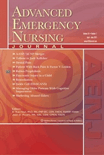
Advanced Emergency Nursing Journal
Advancing Knowledge in Emergency Nursing ExcellenceAdvanced Emergency Nursing Journal, published by Lippincott Williams & Wilkins, stands as a key resource within the domains of Emergency Medicine and Emergency Nursing. With a commitment to advancing the field, this journal provides a platform for rigorous research, critical reviews, and innovative practices aimed at enhancing patient care in emergency settings. Though it holds a Q3 ranking in both related categories as per the 2023 metrics, its global reach spans various aspects of emergency care, promising insights that are crucial for both professionals and academics alike. Covering topics from clinical procedures to policy analysis, the journal invites submissions that aim to bridge theory and practice, highlighting the importance of evidence-based approaches in emergency nursing. Researchers, educators, and healthcare practitioners can Find more information and explore their own contributions in a dynamic environment that continuously evolves with the field. Whether you're seeking to stay current with the latest advancements or to publish your findings, this journal is an essential asset for those dedicated to improving care in urgent medical situations.
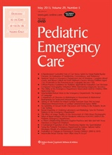
PEDIATRIC EMERGENCY CARE
Delivering Critical Insights for Pediatric Emergency ProfessionalsPediatric Emergency Care, published by Lippincott Williams & Wilkins, serves as a vital resource within the fields of Emergency Medicine, Pediatrics, and Child Health. Established in 1985, this journal offers a platform for the dissemination of impactful research, offering critical insights for healthcare professionals dedicated to improving emergency care for children. With an impressive impact factor, it ranks in the Q2 category in Emergency Medicine and Pediatrics, highlighting its significance in advancing clinical practices and outcomes. Although not an open-access journal, it provides extensive access options to ensure the research is available to a broad spectrum of readers. The journal's rigorous standards and commitment to excellence make it an essential tool for researchers, practitioners, and students aiming to stay at the forefront of pediatric emergency care advancements.
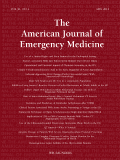
AMERICAN JOURNAL OF EMERGENCY MEDICINE
Elevating Standards in Emergency Medical ResearchThe American Journal of Emergency Medicine, published by W B Saunders Co-Elsevier Inc, stands as a premier platform for the dissemination of high-quality research in the field of emergency medicine. With the ISSN 0735-6757 and E-ISSN 1532-8171, this esteemed journal features contributions that shape clinical practices and enhance patient care in urgent medical scenarios. Since its inception in 1983, the journal has garnered a notable Q1 ranking in Emergency Medicine and a Q2 ranking in Medicine (miscellaneous) for 2023, reflecting its significant impact in the field, as denoted by its Scopus rank of 12 out of 109, placing it in the 89th percentile. Researchers and practitioners alike benefit from the rigorous peer-review process, ensuring that only impactful studies are published, even as the journal maintains a non-open access model, allowing for selective availability of pioneering research. By fostering academic dialogue and advancing knowledge, the American Journal of Emergency Medicine plays a crucial role in addressing the dynamic challenges faced by healthcare professionals in emergency settings.
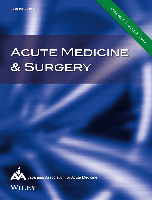
Acute Medicine & Surgery
Pioneering research for the future of emergency and surgical medicine.Acute Medicine & Surgery is a notable peer-reviewed journal published by WILEY, focusing on the dynamic intersection of acute medicine and surgical practice. With an ISSN of 2052-8817, this open-access journal has been committed to disseminating high-quality research since its transition to open access in 2017. Aimed at an audience comprising researchers, clinicians, and students in the medical field, it facilitates broader access to innovative studies that enhance understanding and practice within acute care settings. The journal covers a wide range of topics, including emergency medicine, trauma care, critical analysis of surgical techniques, and best practices in clinical management. By providing a platform for cutting-edge research and case studies, Acute Medicine & Surgery plays a pivotal role in improving patient outcomes and advancing the field of acute healthcare.
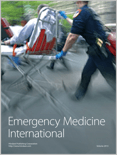
Emergency Medicine International
Empowering practitioners with vital insights in crisis intervention.Emergency Medicine International is a distinguished journal dedicated to the dynamic field of emergency medicine, published by HINDAWI LTD. As an Open Access journal since 2010, it ensures widespread dissemination of high-quality research, providing vital insights and advancements in emergency care and crisis intervention methodologies. With an ISSN of 2090-2840 and an E-ISSN of 2090-2859, the journal is indexed in Scopus, where it holds a commendable rank of #104 of 109 in the emergency medicine category, placing it in the 5th percentile. Spanning crucial years from 2014 to 2017 and 2022 to 2024, Emergency Medicine International has established a reputation for publishing significant findings that aid practitioners and researchers in improving emergency healthcare outcomes. Operating from its headquarters in Egypt, the journal serves as an essential resource for professionals and students alike, fostering the development of evidence-based practice in a critical area of healthcare.

BMC EMERGENCY MEDICINE
Leading the way in emergency medicine scholarship.BMC Emergency Medicine is a premier, open-access journal that has been at the forefront of the field of emergency medicine since its inception in 2001. Published by BMC in the United Kingdom, this journal is distinguished by its impact factor and remarkable Q1 ranking in emergency medicine, placing it among the top-tier publications in this vital area of healthcare. With a current Scopus rank of #30 out of 109 in the category of Emergency Medicine, and occupying the 72nd percentile, BMC Emergency Medicine is a leading platform for researchers and practitioners alike to disseminate their findings related to urgent and critical care. The journal embraces a broad scope within emergency medicine, encouraging submissions on a wide range of topics including clinical practice, innovative techniques, public health, and policy issues that critically affect emergency care. The open-access model ensures that high-quality research is readily available to the global community, fostering collaboration and advancing knowledge in the field. For those dedicated to improving patient outcomes in emergency settings, BMC Emergency Medicine represents an invaluable resource and community.
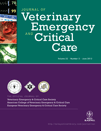
JOURNAL OF VETERINARY EMERGENCY AND CRITICAL CARE
Empowering practitioners through cutting-edge research.JOURNAL OF VETERINARY EMERGENCY AND CRITICAL CARE, published by WILEY, is a leading journal in the field of veterinary science, specifically focusing on emergency medicine and critical care for animals. With an impact factor that underscores its significance in the field, this journal serves as a crucial resource for veterinary professionals, researchers, and students dedicated to advancing the care of animals in critical conditions. Since its inception in 1991, the journal has continually contributed to the knowledge base and methodological advancements in veterinary emergency practices, consistently ranking in the Q1 category for veterinary sciences, as per the latest Scopus Ranks. Located in the United Kingdom, the journal is committed to disseminating high-quality, peer-reviewed research that addresses the challenges and innovations in veterinary critical care. With its goal to enhance clinical outcomes through evidence-based practices, the JOURNAL OF VETERINARY EMERGENCY AND CRITICAL CARE remains an essential platform for scholarly communication and collaboration in veterinary medicine.
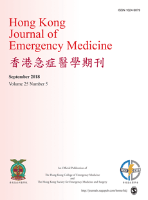
Hong Kong Journal of Emergency Medicine
Exploring Innovations in Critical MedicineThe Hong Kong Journal of Emergency Medicine, published by WILEY, stands as a vital resource in the field of Emergency Medicine since its inception in 2004. With a commitment to advancing clinical practice and research, this open access journal—transitioned to open access in 2018—facilitates the dissemination of crucial knowledge among healthcare professionals and researchers, fostering a collaborative environment for addressing urgent medical challenges. The journal boasts an impressive impact factor and holds a Q2 ranking in the Emergency Medicine category for 2023, reflecting its significance and influence within the academic community. Located in Hong Kong, this journal aims to explore a broad spectrum of topics related to emergency and critical care, making it an essential publication for those seeking to enhance their understanding and practice in this fast-evolving field. Accessible through ISSN: 1024-9079 and E-ISSN: 2309-5407, it promises to be an invaluable asset for researchers, practitioners, and students alike.

Internal and Emergency Medicine
Advancing the Frontiers of Internal and Emergency MedicineInternal and Emergency Medicine is a highly regarded academic journal published by Springer-Verlag Italia SRL, dedicated to advancing the fields of emergency medicine and internal medicine. With an impressive Q1 ranking in Emergency Medicine and a Q2 ranking in Internal Medicine as of 2023, the journal serves as a vital platform for researchers and professionals alike seeking to disseminate pioneering findings and innovative practices. Established in 2006 and operational until 2024, the journal focuses on the intersection of these critical medical domains, providing insight into urgent clinical challenges and everyday internal medicine cases. Although currently not open access, it offers subscription options for readers aiming to deepen their knowledge in these essential areas of healthcare. The journal’s contributions are instrumental in shaping medical protocols and enriching the education of students and practitioners globally, all while based in the heart of Italy, specifically Milan.

Notfall & Rettungsmedizin
Elevating the standards of emergency care research.Notfall & Rettungsmedizin is a leading journal in the field of Emergency Medicine, published by Springer in Germany. With a focus on advancing the science and practice of emergency care, this journal offers a platform for original research, critical reviews, and case studies that address the latest challenges and innovations in the field. The journal ranks in the Q2 category of Emergency Medicine for 2023, reflecting its commitment to high-quality scholarship and impactful research, evidenced by its Scopus ranking of #51 out of 109, placing it within the 53rd percentile. Although it does not provide open access, the content is invaluable for researchers, healthcare professionals, and students engaged in emergency medicine. From its inception in 1999 to its continuous publication through 2024, Notfall & Rettungsmedizin remains a vital resource for disseminating knowledge and fostering professional development in emergency care worldwide.